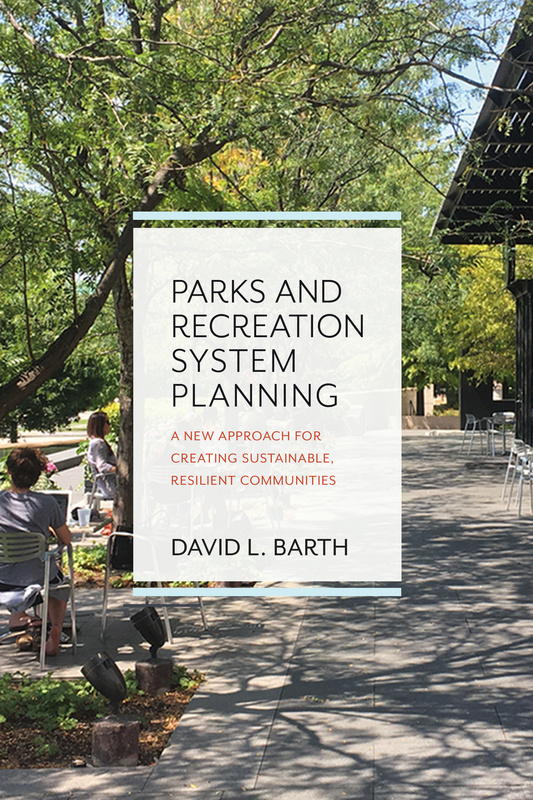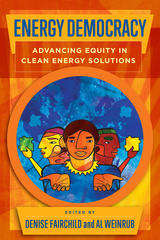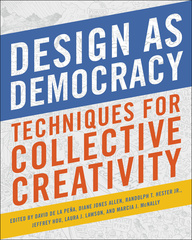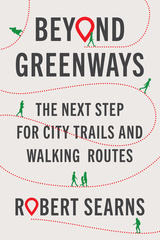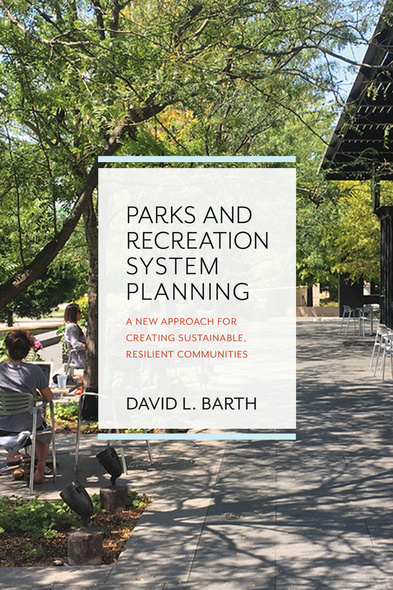
296 pages, 6 x 9
22 photos, 40 illustrations
Paperback
Release Date:21 Jul 2020
ISBN:9781610919333
Parks and Recreation System Planning
A New Approach for Creating Sustainable, Resilient Communities
By David Barth
Island Press
Parks and recreation systems have evolved in remarkable ways over the past two decades. No longer just playgrounds and ballfields, parks and open spaces have become recognized as essential green infrastructure with the potential to contribute to community resiliency and sustainability. To capitalize on this potential, the parks and recreation system planning process must evolve as well. In Parks and Recreation System Planning, David Barth provides a new, step-by-step approach to creating parks systems that generate greater economic, social, and environmental benefits.
Barth first advocates that parks and recreation systems should no longer be regarded as isolated facilities, but as elements of an integrated public realm. Each space should be designed to generate multiple community benefits. Next, he presents a new approach for parks and recreation planning that is integrated into community-wide issues. Chapters outline each step—evaluating existing systems, implementing a carefully crafted plan, and more—necessary for creating a successful, adaptable system. Throughout the book, he describes initiatives that are creating more resilient, sustainable, and engaging parks and recreation facilities, drawing from his experience consulting in more than 100 communities across the U.S.
Parks and Recreation System Planning meets the critical need to provide an up-to-date, comprehensive approach for planning parks and recreation systems across the country. This is essential reading for every parks and recreation professional, design professional, and public official who wants their community to thrive.
Barth first advocates that parks and recreation systems should no longer be regarded as isolated facilities, but as elements of an integrated public realm. Each space should be designed to generate multiple community benefits. Next, he presents a new approach for parks and recreation planning that is integrated into community-wide issues. Chapters outline each step—evaluating existing systems, implementing a carefully crafted plan, and more—necessary for creating a successful, adaptable system. Throughout the book, he describes initiatives that are creating more resilient, sustainable, and engaging parks and recreation facilities, drawing from his experience consulting in more than 100 communities across the U.S.
Parks and Recreation System Planning meets the critical need to provide an up-to-date, comprehensive approach for planning parks and recreation systems across the country. This is essential reading for every parks and recreation professional, design professional, and public official who wants their community to thrive.
Expertly written, skillfully organized and deftly presented, Parks and Recreation System Planning: A New Approach for Creating Sustainable, Resilient Communities is an ideal textbook and instructional reference on the subject of developing and upgrading community parks and recreational resources. Enhanced for academia with thirty pages of Appendices, eight pages of Notes, and an eight page Index, Parks and Recreation System Planning is unconditionally recommended for all community, college, and university library Parks/Recreational Development collections and Urban/Land Use Planning supplemental curriculum studies lists.'
Barth provides a much-needed contemporary approach, calling for park and recreation systems to address inequities and climate change and become more interconnected and integral to a more equitable public realm.
An accessible and flexible text, it should find its way into undergraduate and professional development courses designed to introduce and improve parks and recreation system planning practice.’
David Barth provides a comprehensive guide to park and recreation system master planning that sets communities up to succeed. This new, holistic approach recognizes parks and recreation systems as part of public realm infrastructure serving social, environmental and economic needs. This book will help leaders leverage the multiple benefits that parks and recreation provide for a resilient and healthy future.
In this marvelous book, David Barth explains how parks can transform an ordinary landscape into a resilient, sustainable community. Better yet, he provides the step by step instructions you will need to implement that transformation.'
David Barth does the urban planning world a great service here, first showing the vital importance of parks to cities, then demonstrating clearly and rigorously the best ways to plan and obtain them. He does it all with refreshing humility, an accessible writing style, and a generosity of spirit. This book really moves the city parks conversation another step forward.
David Barth was the founding principal of Barth Associates, LLC, a firm that specialized in creating more livable, sustainable, and resilient communities through transformative public realm projects. Dr. Barth developed parks and recreation system plans for over one hundred communities throughout the United States, and led the design of hundreds of parks and trails projects. He lived with his wife in Florida, where he enjoyed paddling, fishing, and camping in the beautiful public parks, rivers, lakes and beaches.
Acknowledgments
Introduction: A Framework for Community Sustainability and Resiliency
Part I: Generating Multiple Benefits
Chapter 1. Parks and the Public Realm
Chapter 2. Multiple Dimensions of Parks and Recreation Systems
Chapter 3. High-Performance Public Spaces
Part II: Planning a Comprehensive Approach
Chapter 4. A New Approach to Parks and Recreation System Planning
Chapter 5. Initiating and Planning the PRSMP Process
Chapter 6. The Preliminary Implementation Framework
Part III: Executing the New Approach
Chapter 7. Existing Conditions Analysis
Chapter 8. The Needs Assessment
Chapter 9. Level-of-Service Alternatives
Chapter 10. Developing a Long-Range Vision
Chapter 11. Implementation Strategy
Conclusion: The Power of Parks and Recreation System Planning
Appendixes
Notes
Index
Introduction: A Framework for Community Sustainability and Resiliency
Part I: Generating Multiple Benefits
Chapter 1. Parks and the Public Realm
Chapter 2. Multiple Dimensions of Parks and Recreation Systems
Chapter 3. High-Performance Public Spaces
Part II: Planning a Comprehensive Approach
Chapter 4. A New Approach to Parks and Recreation System Planning
Chapter 5. Initiating and Planning the PRSMP Process
Chapter 6. The Preliminary Implementation Framework
Part III: Executing the New Approach
Chapter 7. Existing Conditions Analysis
Chapter 8. The Needs Assessment
Chapter 9. Level-of-Service Alternatives
Chapter 10. Developing a Long-Range Vision
Chapter 11. Implementation Strategy
Conclusion: The Power of Parks and Recreation System Planning
Appendixes
Notes
Index

